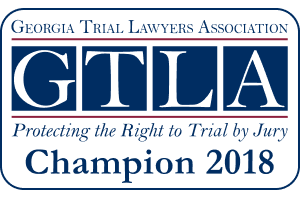Traumatic Brain Injury
What do Athletes, Soldiers, and Car Accident Victims All Have in Common?
Athletes, soldiers, and car accident victims: you might be asking yourself what these three have in common. New research has found that these groups of people could be the most at risk for future cognitive problems after a traumatic brain injury. New research is helping to connect the dots between traumatic brain injury and the risk for memory loss and other brain-related problems that could come later in life. As an Atlanta injury attorney I have seen the long-term effects of those people who suffer a traumatic brain injury. Closed head injury to the brain is one of the most overlooked and sinister outcomes of traumatic injuries. New research indicates that technology allows for doctors to detect a patient’s degree of injury based on “plague” that is revealed in the brain after the injury.
Brain imaging technology known as positron emission tomography (PET) shows that people who have had a traumatic brain injury develop “plaques” in their brains that are like those seen in the brains of people with Alzheimer’s disease, the most common type of dementia.
“Our research has shown, for the first time, that PET imagine can show amyloid deposits in the brain after head injury,” said study author Dr. David Menon of the anesthesia division at the University of Cambridge, England. The best news for doctors is that those deposits can show up within hours of the blow to the head.
For the study, researchers used PET imaging to look at the brains of 15 people who had reported a traumatic brain injury and 11 healthy individuals who reported no history of any type of brain trauma. The images were taken between one day and then close to a year after the head injury.
“Patients can be imaged with PET to detect early amyloid deposition, and then followed up to see whether this early amyloid deposition resolves, whether it recurs, and how these processes relate to later cognitive decline,” Menon said.
Researchers in the study found the greater the blow to the head, the more amyloid plaque accumulation and dementia risk was seen. Individuals most at risk include anyone with a genetic predisposition to Alzheimer’s disease. Outside experts have openly stressed the importance of these findings.
“The study shows evidence of these plaques days after the accident,” said Dr. Mony de Leon, director of the Centre in New York City. “It is not like someone got hit on the head at age 32 and can’t remember anything at the age of 60. The damage is immediate, and now we have a way of seeing it.”
He also pointed out that while amyloid plaques are a very typical marker of Alzheimer’s disease, they are not the only one. Tangled or twisted strands of another protein are also seen in the brains of people with the disease.
“This study is highly suggestive that there is an Alzheimer’s disease-like effect in the brain after head injury, but it’s not definitive because we can’t see the tangles,” said de Leon.
Ken Shigley is past president of the State Bar of Georgia (2011-12), double board certified in Civil Trial Advocacy and Civil Pretrial Advocacy by the National Board of Legal Specialty Certification, and lead author of Georgia Law of Torts: Trial Preparation and Practice. His Atlanta-based civil trial practice is focused on representation of plaintiffs in cases of castastrophic personal injury and wrongful death.












